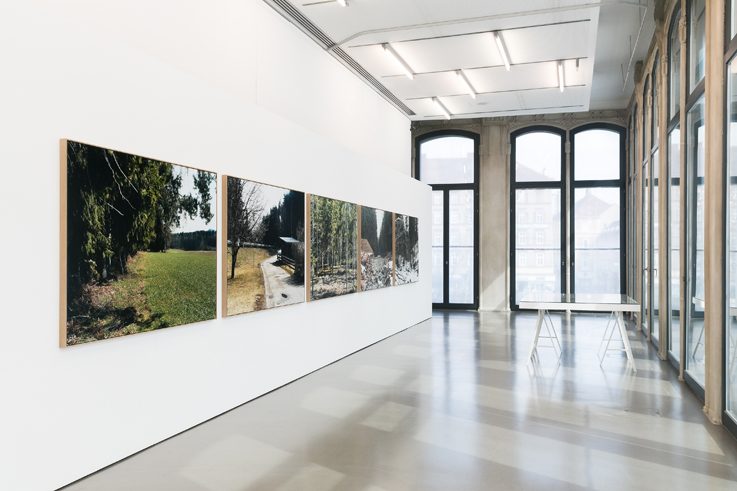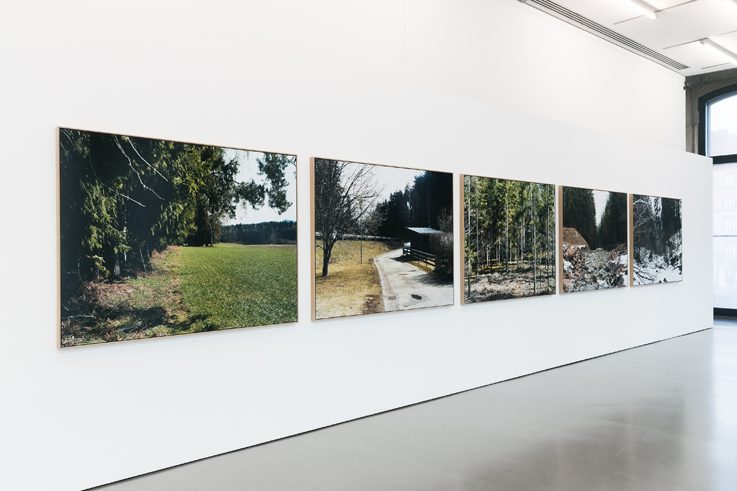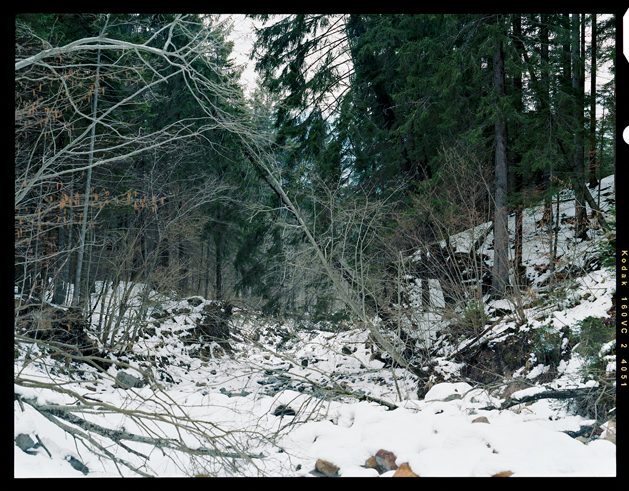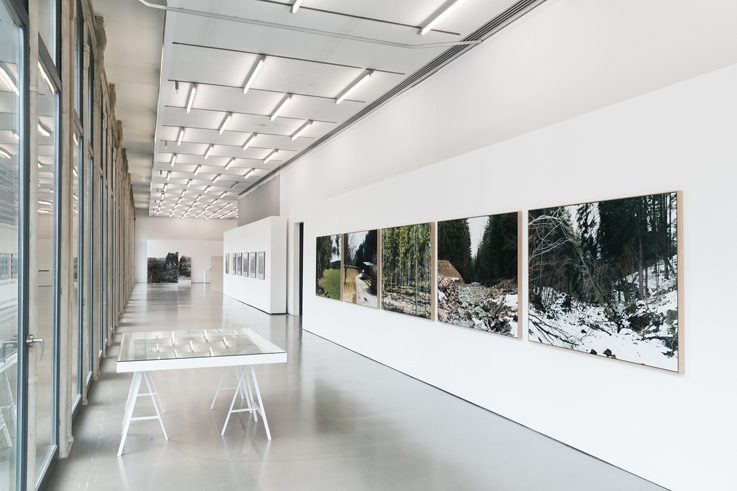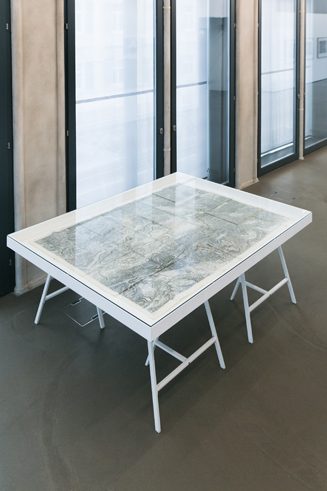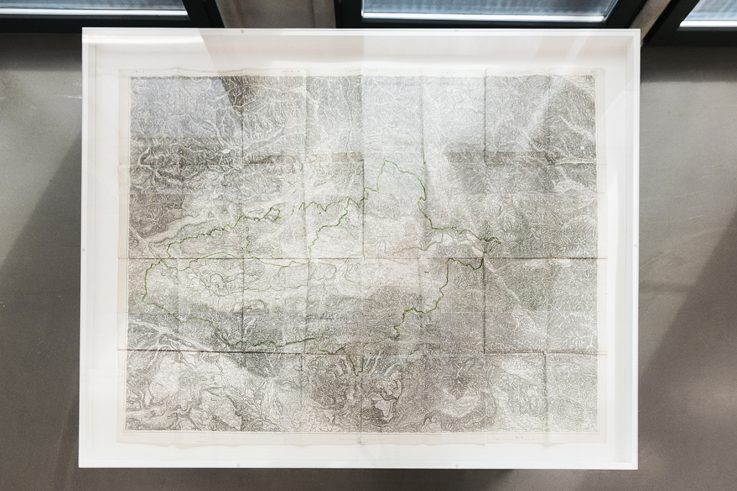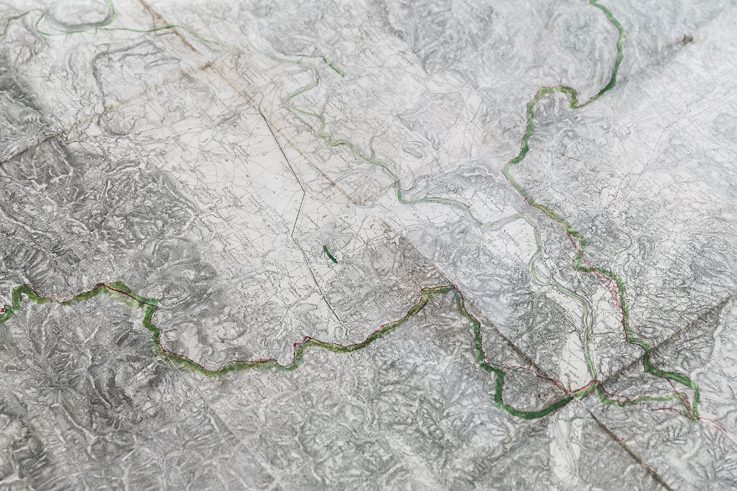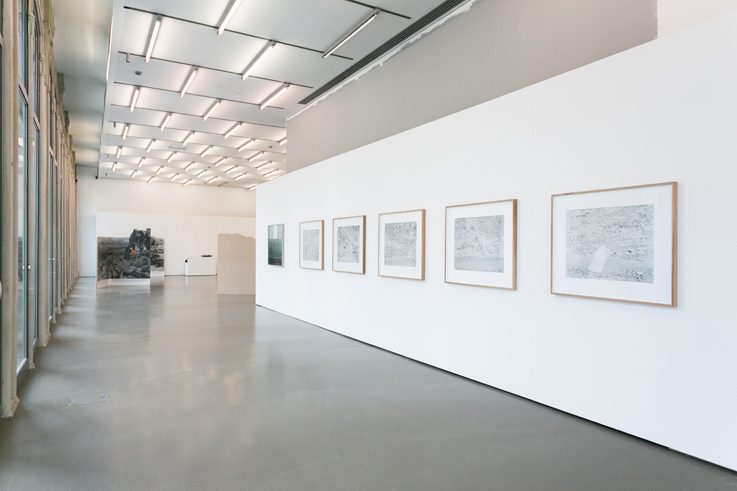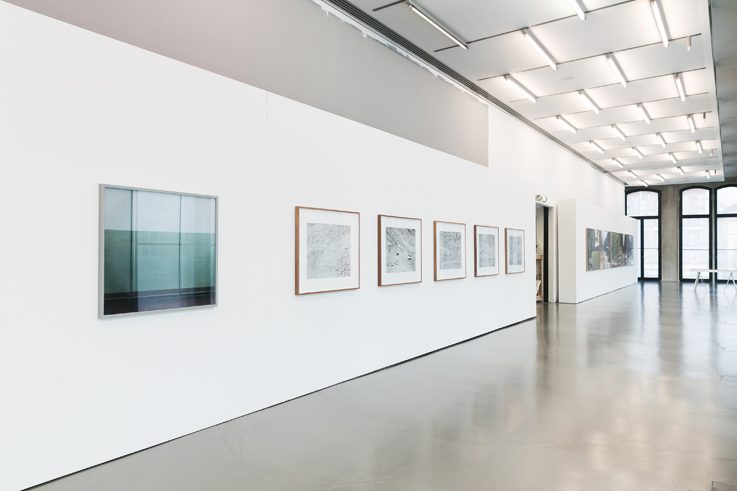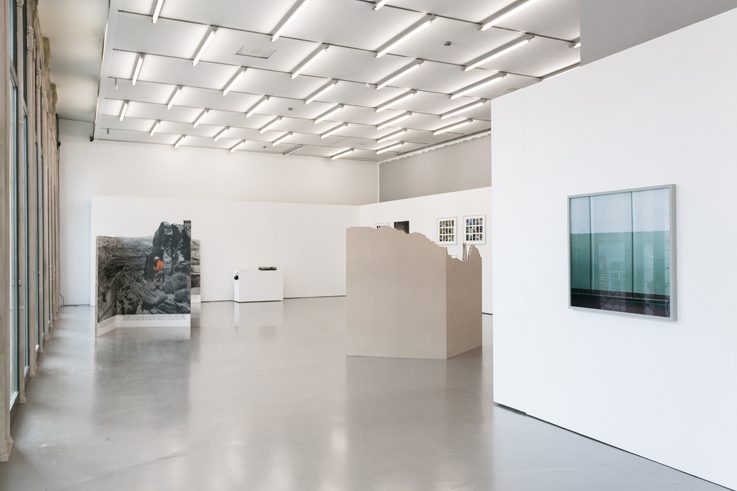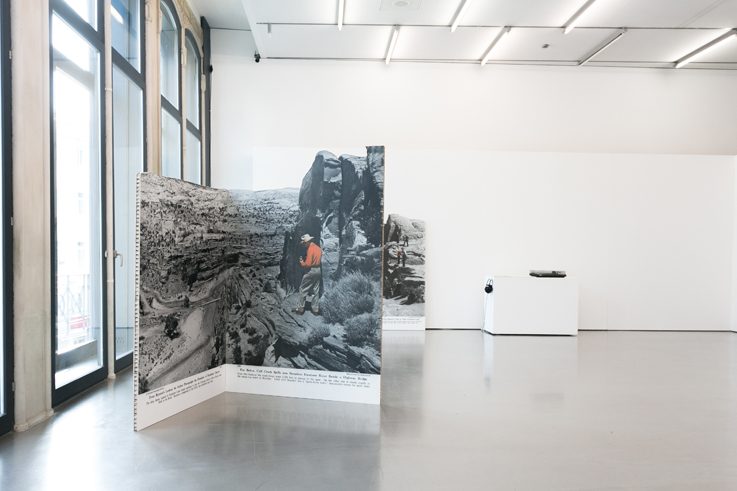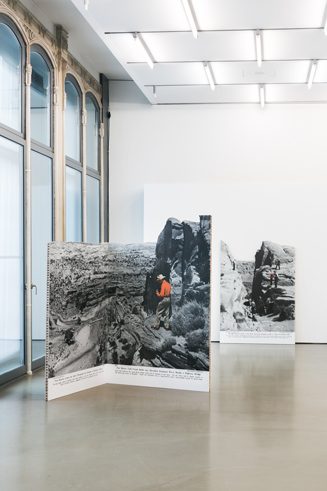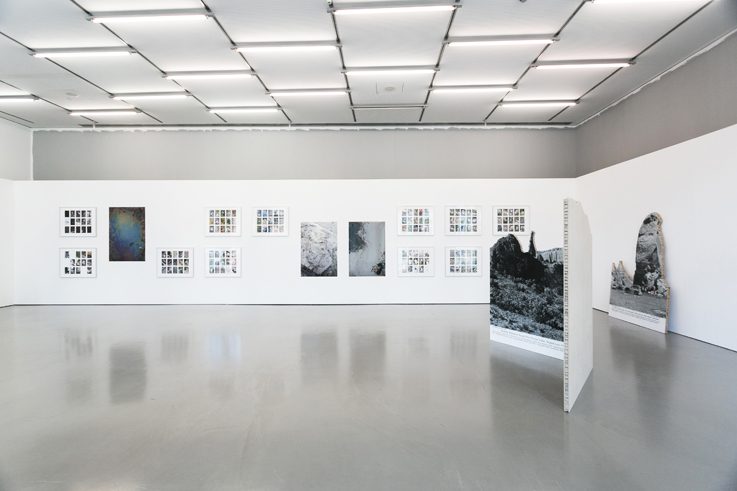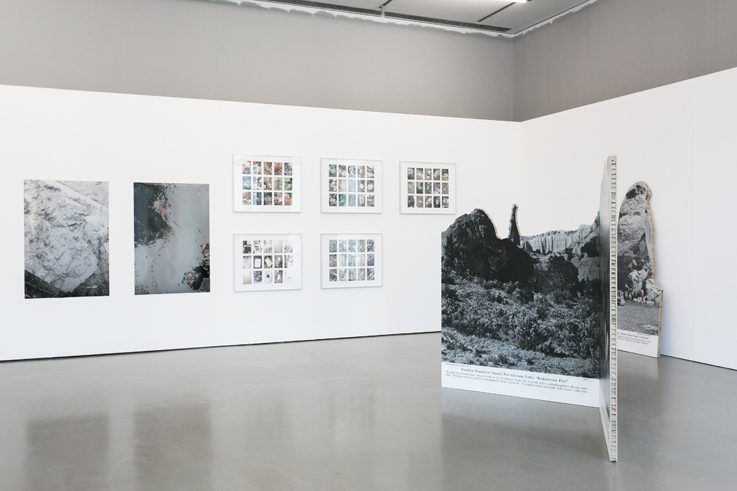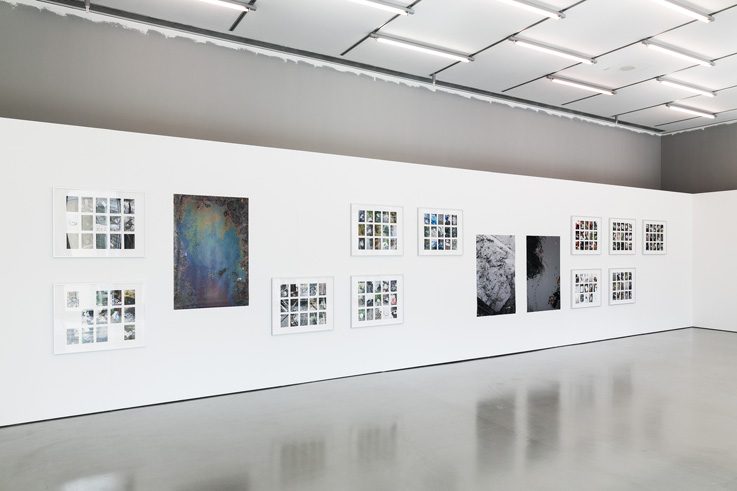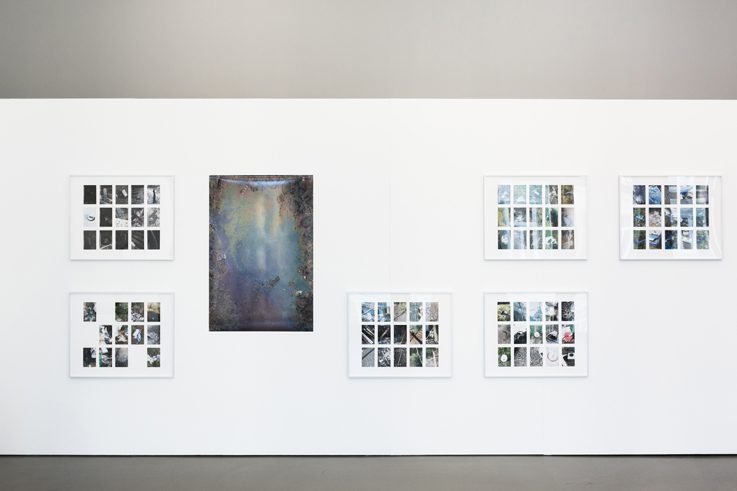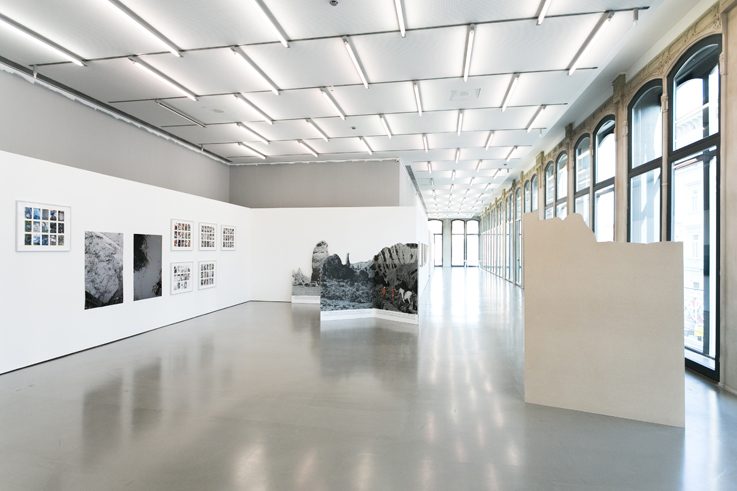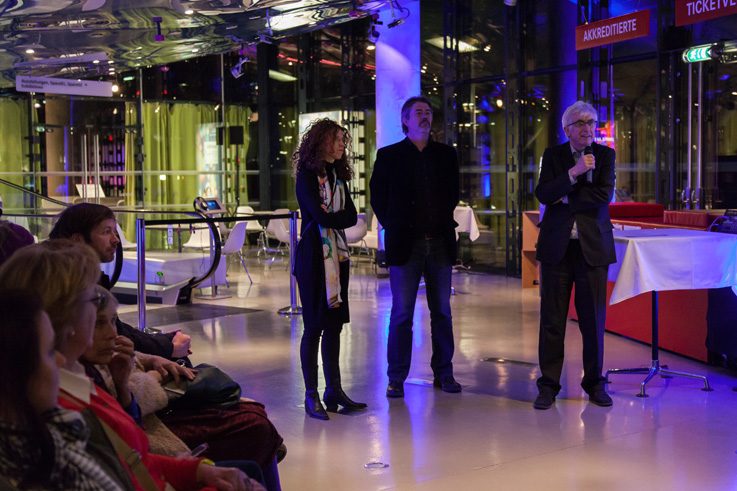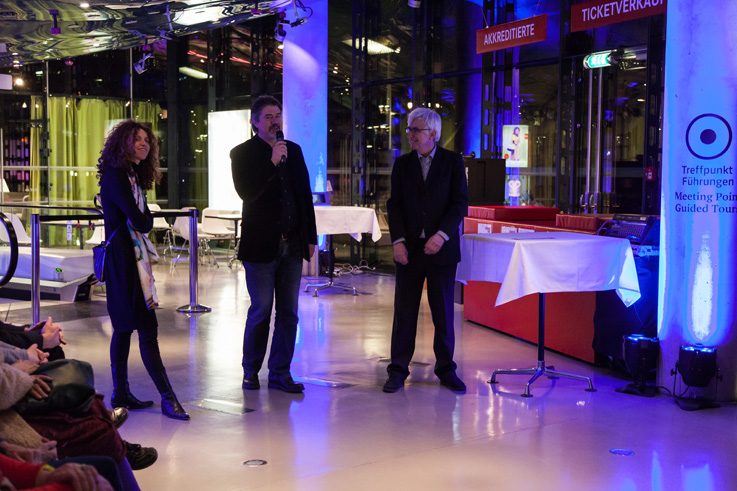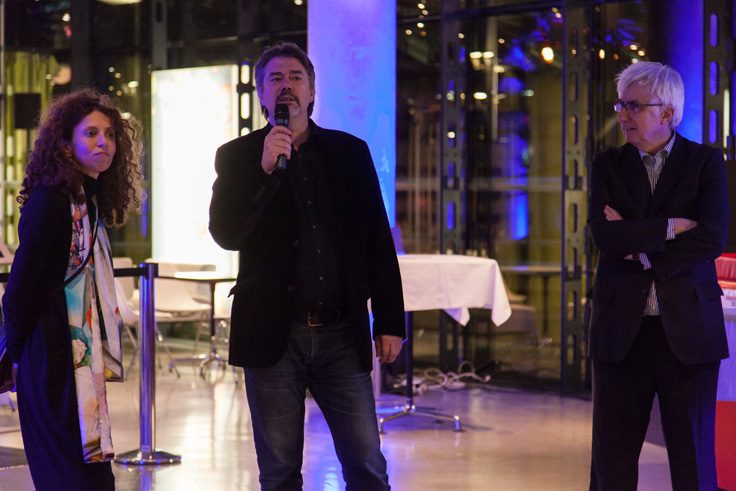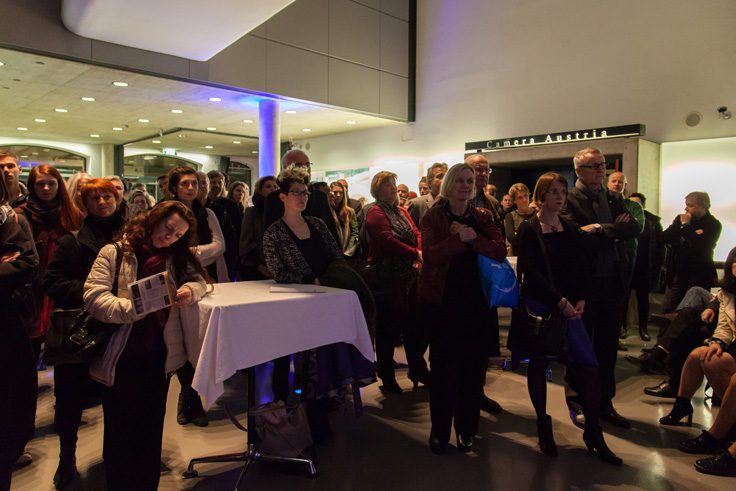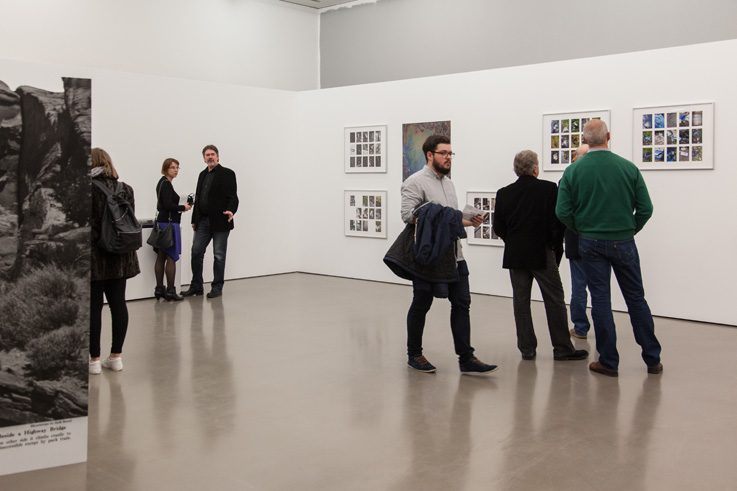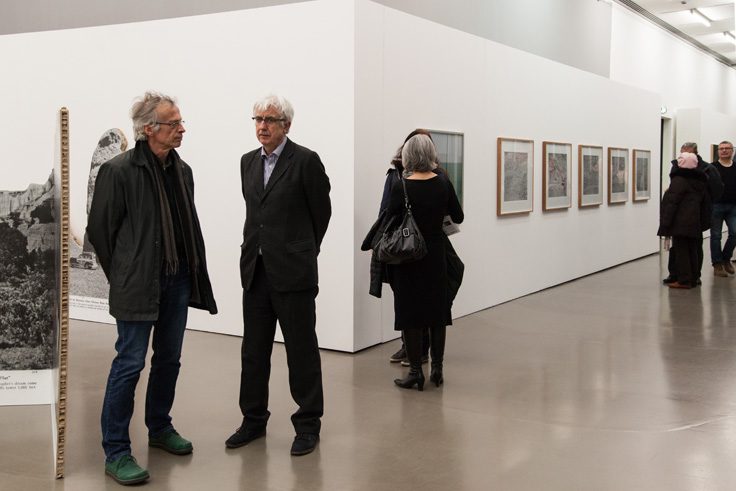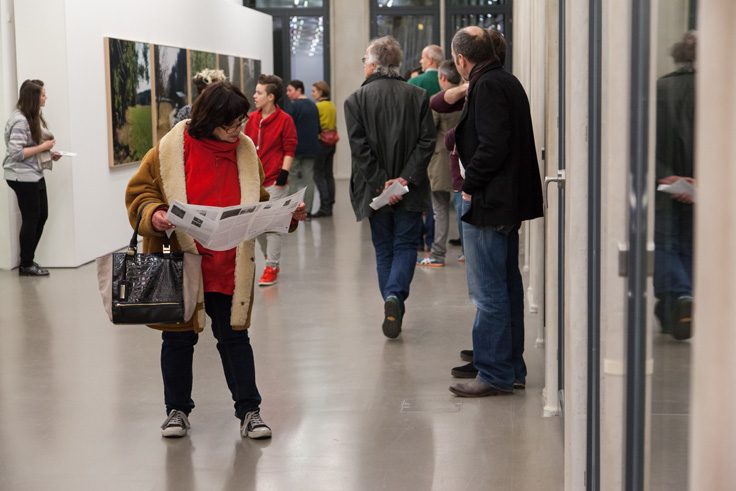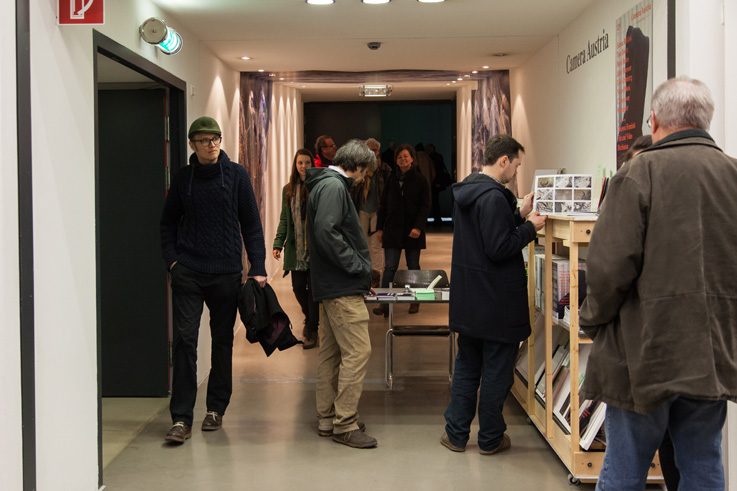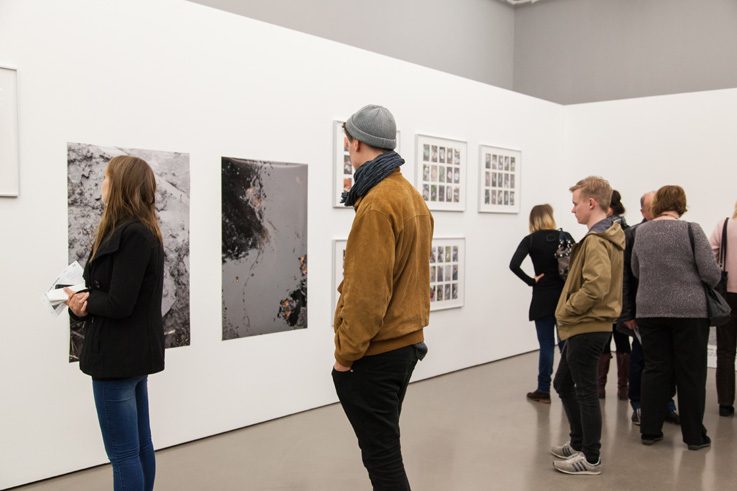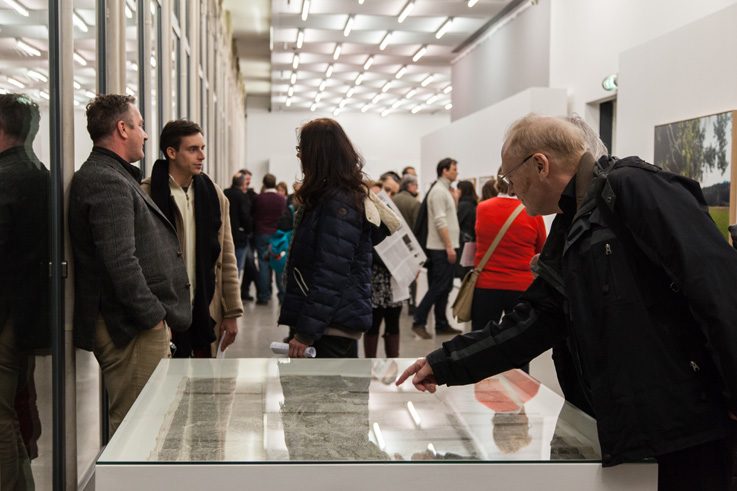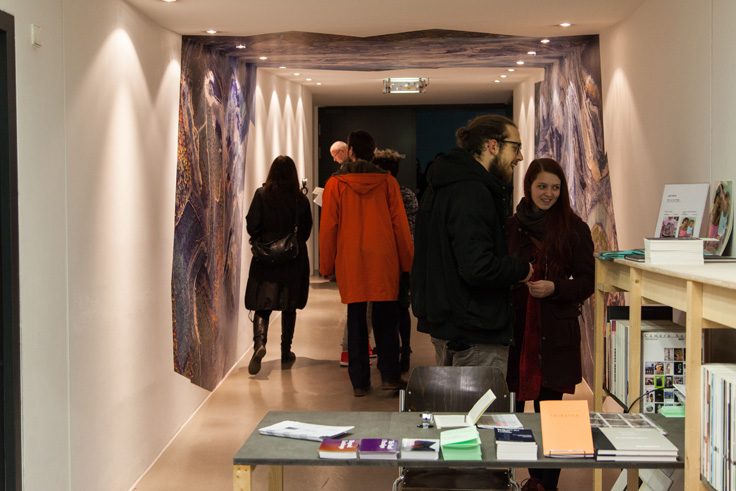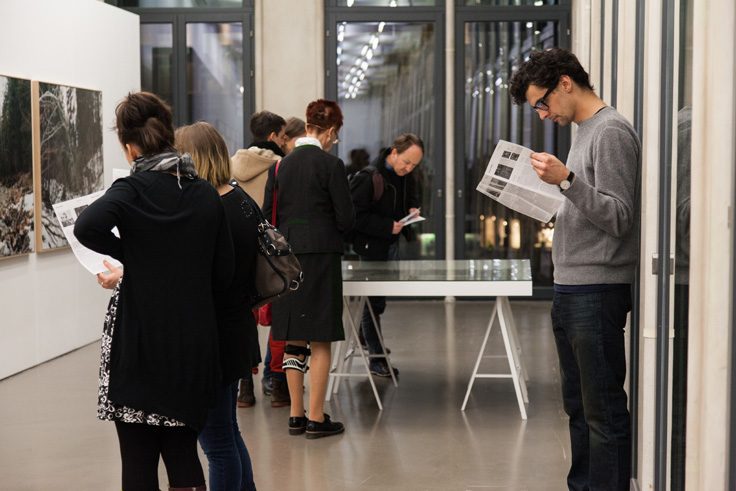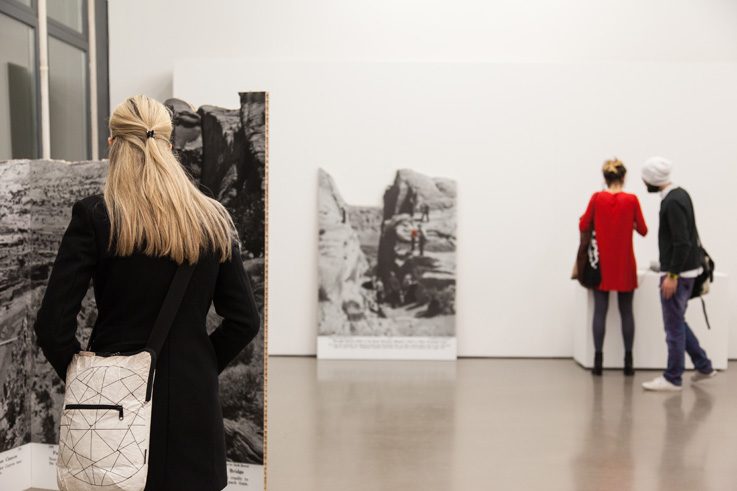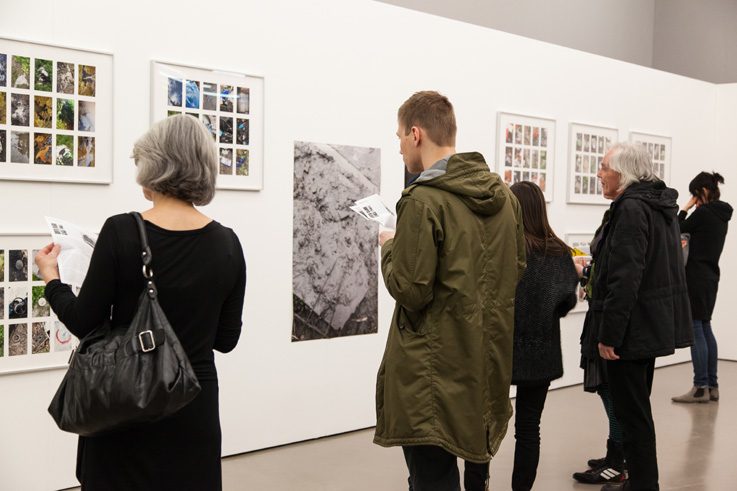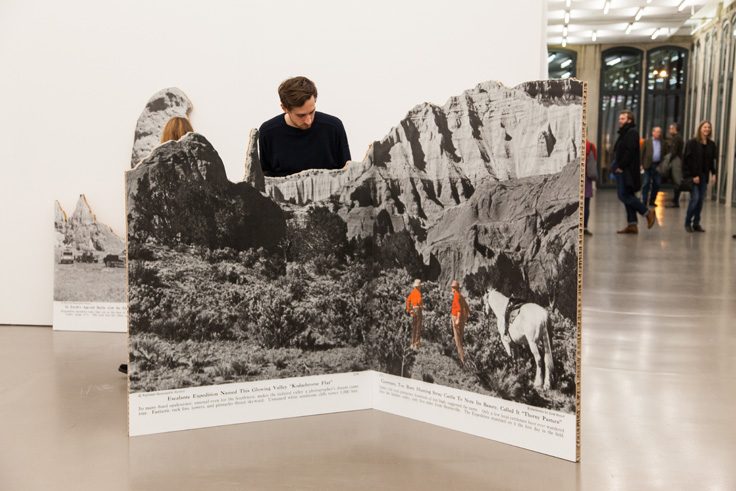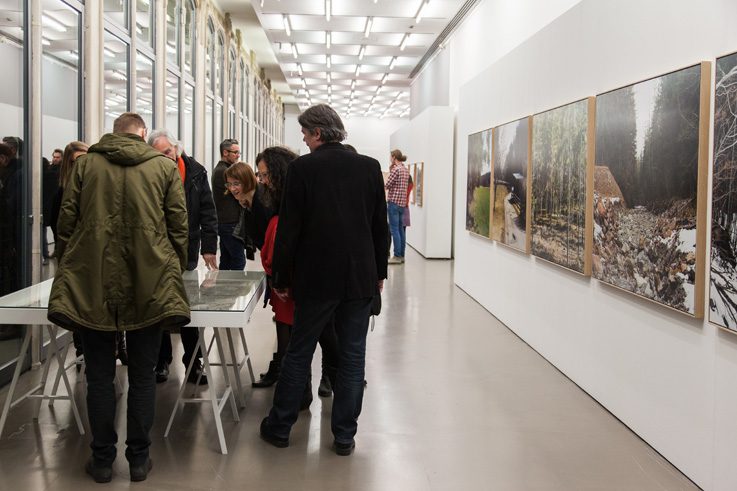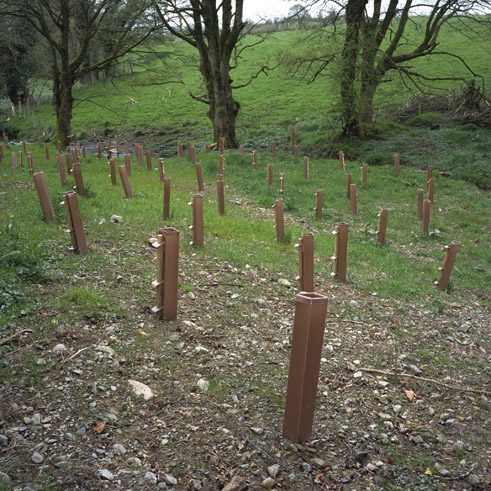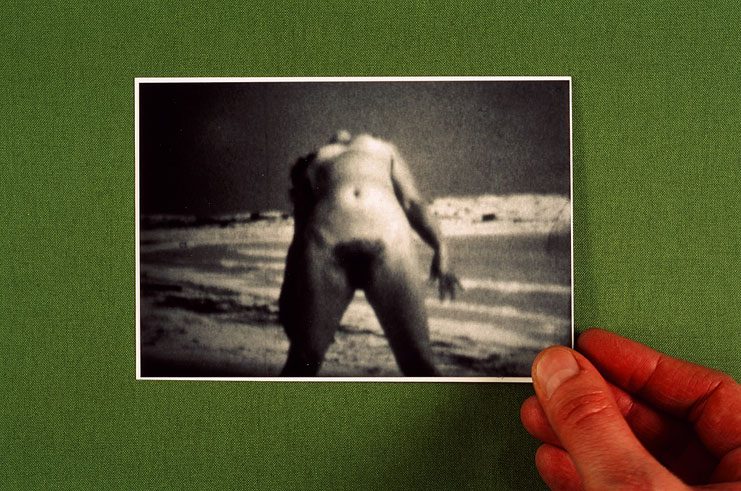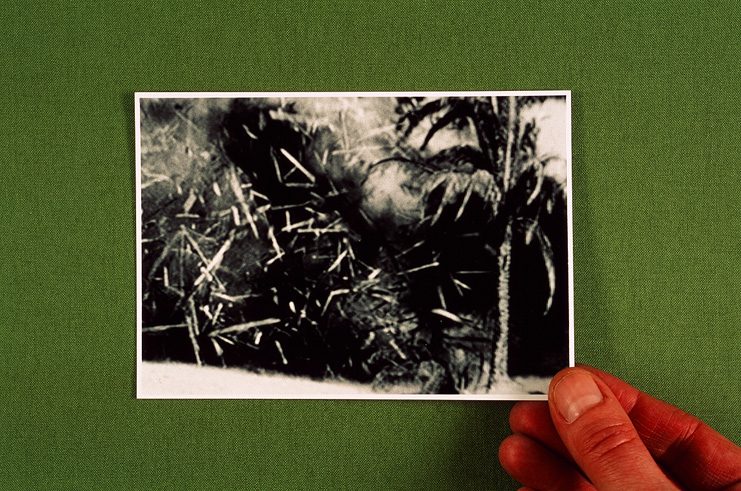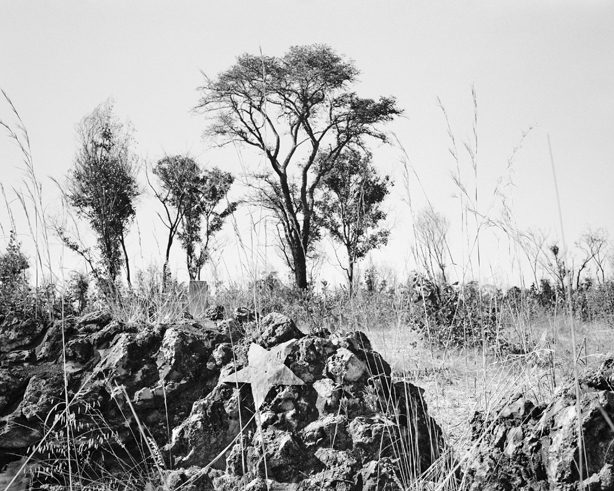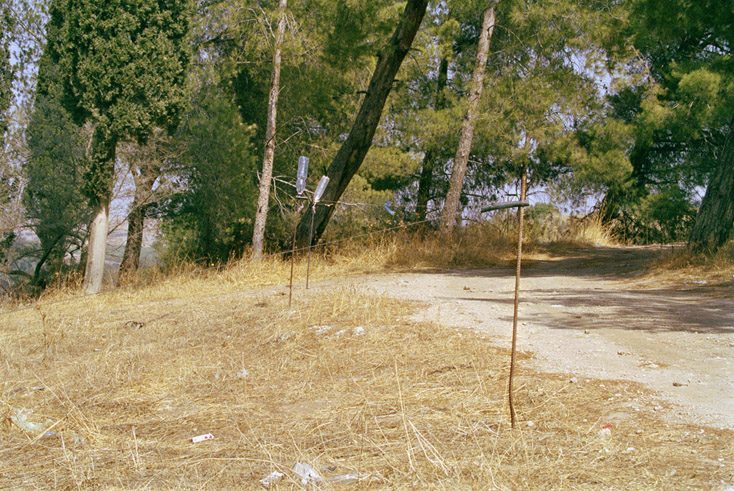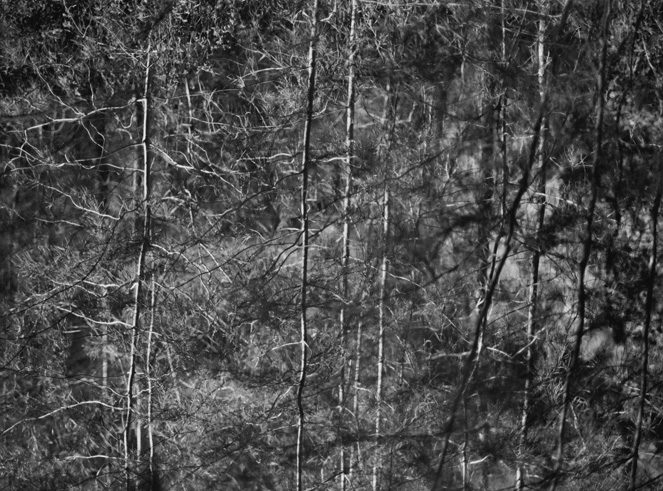Disputed Landscape
Infos
The Visual Paradigm
Opening:
12.3.2015, 7 pm
Duration:
13.3.–10.5.2015
Artists:
Stephanie Kiwitt (DE/BE)
Christian Mayer (AT)
Ricarda Roggan (DE)
Nicole Six & Paul Petritsch (AT)
Uncovering History
Opening:
15.5.2015, 8 pm
im Rahmen von aktuelle Kunst in graz
Duration:
16.5.–5.7.2015
Artists:
Anthony Haughey (IE)
Tatiana Lecomte (AT)
Jo Ractliffe (ZA)
Ahlam Shibli (PS)
Efrat Shvili (IL)
Enacting Landscape
Opening:
10.7.2015, 8 pm
Duration:
11.7.–6.9.2015
Artists:
Philip Gaißer (DE)
Michael Höpfner (AT)
Sharon Ya’ari (IL)
Opening hours:
Tue – Sun 10 am – 5 pm
An exhibition series in cooperation with Kunsthaus Graz
Intro
Landscapes are never simply there. Landscapes are always an expression of relationships. Landscape is a social covenant, a convention. In this nexus of relations and conventions, photographs play a central role. If landscape always represents a combination of aesthetic, social, economic, symbolic, and spatial elements, and photography “serves as a kind of relay connecting theories of art, language, and the mind with conceptions of social, cultural, and political value” (W. J. T. Mitchell), then a complex articulation of culture arises at the junction between landscape and photography: both associate that history with this view, that text with this identity, that memory with this place, that place with this history. Both landscape and photography embody a space where differences are yielded; both are linked to identity, memory, knowledge, history, and experience and provide a stage for related inscriptions.
Read more →
Disputed Landscape
Landscapes are never simply there. Landscapes are always an expression of relationships. Landscape is a social covenant, a convention. In this nexus of relations and conventions, photographs play a central role. If landscape always represents a combination of aesthetic, social, economic, symbolic, and spatial elements, and photography “serves as a kind of relay connecting theories of art, language, and the mind with conceptions of social, cultural, and political value” (W. J. T. Mitchell), then a complex articulation of culture arises at the junction between landscape and photography: both associate that history with this view, that text with this identity, that memory with this place, that place with this history. Both landscape and photography embody a space where differences are yielded; both are linked to identity, memory, knowledge, history, and experience and provide a stage for related inscriptions.
Against this backdrop, the exhibition series “Disputed Landscape” queries current photographic positions as to how they convey or make visible these articulations in pictures. Some of the invited artists work in areas that are or have been marked by military or national conflict, ranging from Tibet to the Middle East, from Africa to Ireland, with an aim to expose their forensic and symbolic traces (“Uncovering History”); others explore the fiction of landscape, historical photographic dispositifs, or the documentary conflict with a view to representation (“The Visual Paradigm”); and still others focus on the temporal, spatial, corporeal, and pictorial constructions of landscape (“Enacting Landscape”). Common to all projects appears to be the fact that the photographs produced in the process are themselves permeated by conflicts and ruptures, that they challenge existing articulations of those ideologies by way of these representations. Is it even possible to reconstruct (conflicting) histories like those inscribed in landscapes? And if so, in which ways? How are these histories staged in image form, themselves being characterised by the suppression of visibility, a suppression that is so often compounded and ingrained by a suppression of (other) histories? Which facets of historical formations can be exposed, which aspects of things and words, vision and speech, content and expression? Against this background, the exhibition project opens up an arena for coming to terms with articulations, a pursuit that ultimately infuses all of the pictures themselves.
The Visual Paradigm
13. 3. – 10. 5. 2015
Stephanie Kiwitt
In her project “Wondelgemse Meersen” (2012), Stephanie Kiwitt (born 1972 in Bonn, lives in Brussels) photographed a wasteland to the north of the Belgian city of Ghent. The area, which encompasses around 100 hectares, was originally a marshland and is today surrounded by transport routes, commercial and housing zones, and empty industrial buildings. Kiwitt meticulously documents this semi-urban area through countless photographs, which in the eponymous book are generally arranged in grids and are only occasionally interrupted by full-page spreads. The images feature an untold number of details, yet without ever providing an overview of the landscape itself. It seems to be a way of visually probing, testing, exploring—culture and nature collide in the seemingly cut-out pictures, with allusions to various utilisations, though only fragmentary and without context. The area itself remains inaccessible and unidentified, showing how the artist impressively documents the actual limits of documentation.
Christian Mayer
In a piece from the year 2011, Christian Mayer (born 1976 in Sigmaringen, lives in Vienna) thematises the story of a National Geographic Society expedition that took place in Basin State Park, Utah, in 1949: “Escalante Expedition Named This Glowing Valley ‘Koda-chrome Flat’”. Image panels freely positioned in space or leaned against the wall display enlarged original photographs and the related captions, translating a certain history of seeing and its photographic representation into an installative arrangement that lends emphasis to the artificiality of the endeavour. With this group of works, Mayer makes clear that the perception of landscape is very closely connected to the cultural techniques of recording, representing, processing, and also archiving it. As such, vision itself has a history and is linked to specific materialities. Mayer brings up to date imaging technology that is no longer available: the production of the Kodak colour film that in the 1940s gave photography its new role as the guiding visual medium was stopped in 2011. This allows the artist to highlight those aspects and methods that are determinative for the visualisation and archivisation of reality, and especially of landscape.
Ricarda Roggan
The work of Ricarda Roggan (born 1972 in Dresden, lives in Leipzig) is characterised by a fundamental control of the photographic image. It determines, through complex arrangements, the way in which we are able to see something. Yet the term intervention better lends itself to describing this working approach than the term staging. This method is even continued when encountering nature and landscape. In the series “Baumstücke” (Treescape, since 2007), the artist prunes the foliage and branches of the depicted tree groups until they meet her own visual specifications. For the series “Sedimente” (Sediments, since 2008), photographed in rock quarries, she rearranges the strata of rock in the foreground. Eliminated in the process are dramatic or attention-drawing details in particular. This gives rise to impermeable disclosures, just as exemplary as they are enigmatic and placeless. Contrasting approaches like documentation and construction, reality and model, which attain clarity through their methods, likewise underscore the power of defining the visual through the perception of landscape.
Nicole Six & Paul Petritsch
In many of their series, Nicole Six and Paul Petritsch (born 1971 in Vöcklabruck and 1968 in Friesach, live in Vienna) engage with the modern paradigm of discovering and surveying the world. They translate the spatial aspects of these conquests into systems of representation that are characterised by conceptual methods, thus placing them in a relationship of tension with the (photographic) image. In the series “Die Innere Grenze/Notranja meja” (The Inner Border, 2008), the artists use historical maps to help them trace the former border between Austria and the “SHS State” (Kingdom of Serbs, Croatians, and Slovenes), which made a claim to parts of what is today Carinthia after the First World War. In 1920, approximately 60 per cent of the population living there voted through a national referendum to remain Austrian. Created according to a predefined cartographic grid, pictures of seventy-four sites show the various landscapes along this historical boundary line. Questions pertaining to the possibilities of reconstruction and documentation are associated with questions of the political meaning of landscape.
Uncovering History
16. 5. – 5. 7. 2015
Anthony Haughey
Anthony Haughey’s series “Disputed Territory” (since 2006) investigates on a long term European territorial and identitarian tensions based on the ramifications of the conflicts in Ireland, Bosnia, and Cosovo. The artist, who resides in Ireland, spent several years living near the border separating Northern Ireland and the Republic of Ireland. At the height of the so-called “Northern Ireland conflict” in the 1970s and 1980s, it was one of the most monitored and militarized zones outside of the former Eastern bloc—however, this line of demarcation remained largely invisible. Haughey’s photographs at times portray strange environments of unclear use, displaying traces that often elude identification. Many of the markings, objects, and interventions remain unintelligible and necessitate a precise and complex approach to interpretation. It is the actual attempt to decipher this meaning that first politicises these landscapes as contested territories. Yet the suppression, forgetting, and remembering of this deciphering are not neutral or innocent acts—so in this sense the pictures plainly show something that corresponds to the discomfort of memory and history, along with the attempt to counteract the disappearance of such memory and history.
Tatiana Lecomte
Tatiana Lecomte (born 1971 in Bordeaux, lives in Vienna) found a private slide archive in a rubbish bin near her home. It always shows—apparently spanning several decades—the same woman, usually in erotic poses, at diverse “showplaces” throughout the world. In “Die El Alamein-Stellung. Eine Montage” (Positions at El Alamein. A Montage, 2012), the artist takes pictures from this archive that were shot along the beach of El Alamein, which was the beach that in 1942 became a part of a war zone, where the Allied Forces forced the German-Italian troops from Africa to retreat after two decisive battles, and combines them with military archive photos: soldiers, burning vehicles, map material, aeroplanes, troop movements. The two image sources are intervolved, ultimately becoming indistinguishable. Since each slide features part of the artist’s hand, which shows us the images against a green background, this indistinguishability is subverted by a moment of authenticity. Indeed, an artificially construed history of war and private obsession is woven into a landscape that has become a stage for both private and historical storylines at the same time, redoubling within this ambivalence the ambivalence of photographic documentation.
Jo Ractliffe
“Sometimes I’m not even sure what it is I’m looking at. I am here without language. It is hard to read the signs.” In the series “As Terras do Fim do Mundo” (The Lands of the End of the World, 2010), Jo Ractliffe documents her journeys to the south of Angola seeking vestiges of the Angolan civil war, in the scope of which South Africa attacked from occupied Namibia in 1975 and also engaged in conflict with the Namibian liberation movement. She travelled with former soldiers who were revisiting, for the first time since achieving independence in 1990, places they had fought. They almost did not recognise the sites. The mines make it nearly impossible for people to resettle there. They also visited Cassinga, where the South African army attacked a SWAPO base in 1978, killing numerous civilians in the process. Ractliffe’s photographs attest to the silence and desolation of the landscape. Her pictures, which sometimes have a spectral air about them, revolve around the idea of a “landscape as pathology” in the sense that past violence—enduring and transient, visible and invisible—becomes inscribed in the present, both forensically and symbolically. This pathology, through which such violent history haunts the present, compels us to engage with those sites that almost totally elude understanding today, for which we still cannot find a language or even pictures.
Ahlam Shibli
The images of “The Valley” were taken in 2007 in the village Arab al-Shibli and its lands in the Lower Galilee of Palestine/Israel. In this work Ahlam Shibli reads the landscape and the marks it bears against the backdrop of the village’s history.
Half the inhabitants of the village Arab al-Sbaih survived the war of 1948 by hiding in caves of Mt. Tabor, the mountain on whose flanks the village had been built. The other half of the people opposed the Jewish fighters, to protect their lands, and as a consequence had to seek refuge in Jordan. In the camps the refugees kept the memory of their original home by using the old names and reproducing the previous social structure. The refugeesʼ living conditions are the subject of Shibliʼs work “Arab al-Sbaih”.
When the people who had been hiding at the mountain returned to their property after the war they were forced to change the name of their village in order to avoid revenge from the victors. They renamed the village Arab al-Shibli.
“The Valley” shows the way the people from Arab al-Shibli are presently forced to scar the mountain that had protected them during the war. In order to be able to build a house they had to give up the name of their village and the respect for the land. While they were deprived of their sense of home, the refugees in the camps in Jordan kept a sense of home, but are without proper houses.
Efrat Shvili
In her series “100 Years” (2007), Efrat Shvili presents close-up photos of trees and thickets, without a horizon and eluding any possible orientation. The nearly graphic surface of the photographs shields us from these placeless spaces that appear to be reserved solely for nature. Yet, as many of her earlier works, this series revolves around the special political situation in Israel. “100 Years” shows a forest in the west of Jerusalem, planted one hundred years ago by the Jewish National Fund as part of a reforestation programme in Palestine. What today appears to be nature and indigenous forest was actually planted on former Palestinian land with the aim of edging out the population there. The beauty and texture of the images is suggestive of a naturalness that stands in contrast to the artificiality and political “nature” of this forest. It turns the images into metaphors of a strategy for usurping landscape, for suppressing history and making it invisible, a history that is always that of others, the others—thus likewise turning the pictures into a political metaphor.
Enacting Landscape
11. 7. – 6. 9. 2015
Philip Gaißer
The saguaro cactus stands like a monument embedded in a stony, overgrown bit of desert landscape, towering towards the sky between two boulders. It is flanked from the rear by karstic hills that delineate a jagged horizon against light clouds. The almost clichéd sense of familiarity mingles with irritation, for the trunk and lateral branches of this particular Carnegiea gigantea have been amputated at what looks to be halfway up. The cut surfaces precisely coincide with the transition between background and sky, instinctively giving rise to a montage or even an intervention on the object by the photographer. It is a picture with a sober yet enigmatic title,
“Made by Cactus Tactical Supply” (2013), fielding an open-ended question as to what may have come to pass here: the intriguing congruence between figure and background inserts an artistic moment into the nature photograph and narrates the landscape as a construction. This is a move that is characteristic of Philip Gaißer’s photography, even if themes and subjects tend to vary. Despite all of the documentary-fostering soberness, his images retain their sense of mystery. There is always an off-balance moment or a focused ambivalence—scenographic gestures that Gaißer uses to channel an irritation into the immediacy of the given photographic circumstance, and to open and mould the view to the landscape.
Michael Höpfner
Michael Höpfner’s work is founded on travel, usually to remote areas devoid of people like the elevated Chang Tang plateau in Tibet in his current piece “Lay Down, Stand Up, Walk On” (2014/15). The focus here is on the rhythm of movement in relation to places in a placeless landscape. Höpfner takes a picture, walks a few steps further, takes another picture, repeating this process four to five times. A sequence arises that documents the movement rather than primarily the landscape itself. Such sequences give rise to a kind of (re-)presentation of the landscape, which is based on the “performance” of walking, halting, pausing briefly, and then continuing to walk. Yet at the centre of this performative documentation is a conflict, namely, between the utterly different conceptions of places and spaces within the culture of the Tibetan highlands and that of post-postmodern consumer society. Here the East stands for a realm of promise and primitiveness, but also of mystery and barbarity, of menace by that which cannot be controlled. The landscapes through which Höpfner perambulates appear to be natural space, but they are in fact a discursively spawned space—by the West—that may be localisable but at the same time remains a ubiquitous threat.
Sharon Ya’ari
Sharon Ya’ari (born 1966 in Israel, lives in Tel Aviv) is especially interested in the ways in which history becomes inscribed in places. In Israel, such history particularly relates to the appropriation of land, with utopias of landscape and society brought into the country by its many immigrants, who attempted—against all odds—to realise them there. Perhaps it is for this reason that many of Ya’ari’s photographs seem curiously out of place, as if artificially arranged, and certainly unclear in terms of meaning. The artist has visited some sites and landscapes at intervals of several years so as to document the—sometimes veritably uncanny—blend of stagnation and decline, custody and neglect, nature and culture, remembrance and forgetting. Here Ya’ari is not primarily concerned with the documentable shifts, but rather with a possible analogy for future changes, not least because, as he himself notes, it may be possible to foretell the next catastrophe. Accordingly, these images appear less as documentation than as a probing of the meaning of the places and landscapes, as relates to the production of identity and belonging, not only in terms of the present day, but also the imminent, uncertain future.


